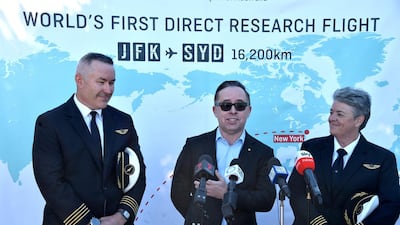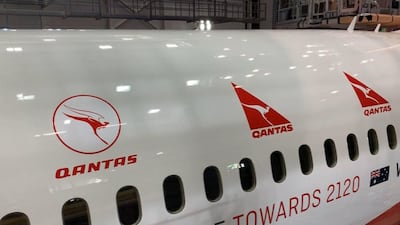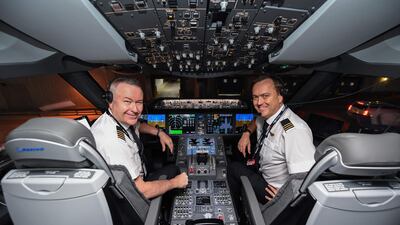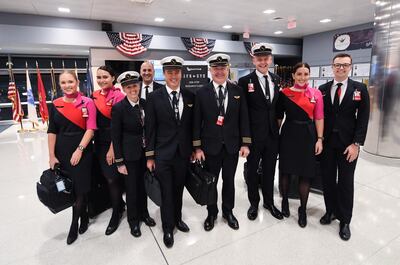The world's longest non-stop passenger flight touched down in Sydney on Sunday, October 20, after travelling 16,200 kilometres from New York.
Flight QF7879 was airborne for 19 hours and 16 minutes in what was the first of three research flights by Qantas. The Australian airline is on a mission to operate the world's first non-stop commercial flights from Australia to London and New York.
On-board the Boeing Dreamliner were 49 test passengers and crew. Cabin lighting, pressure and meal times were carefully planned and the fitness levels of several passengers and crew were tracked throughout the flight which departed New York’s JFK airport on Friday evening.
“Night flights usually start with dinner and then lights off. For this flight, we started with lunch and kept the lights on for the first six hours, to match the time of day at our destination. It means you start reducing the jetlag straight away,” said Alan Joyce, chief executive of Qantas Group.
As well as tucking into three meals, passengers followed a carefully planned sleep schedule, took part in voluntary exercises and were served by a rotating roster of crew.
Passengers ate breakfast, lunch and dinner
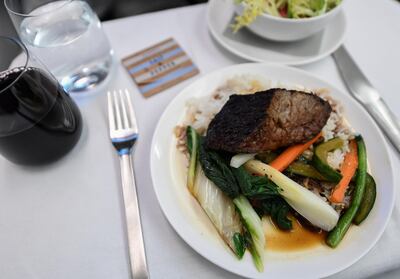
Mealtimes on the test flight were carefully planned by the team behind Project Sunrise in a bid to help passengers stay alert when they needed to be awake and asleep when it was most appropriate.
The first service on the flight was described by Qantas as “a light meal to keep you alert a little longer by boosting your metabolism”.
It included green papaya salad or tomato and saffron soup followed by a choice of wholemeal pasta, Chinese braised beef, Jiangxi style fish, salad or Mexican-style chicken.
Ahead of lights out, passengers had a second service of sweet potato soup, chicken and cheese sandwiches and a panna cotta trifle.
Breakfast was served after about 17 hours in the air. Passengers downed "wake-up" piccolo lattes and fresh juices followed by wild berry granola, bircher muesli or fruit salad. There was also a choice of a healthy breakfast bowl, egg white omelette or an egg-based breakfast tart.
Everyone flew in business class, emissions were offset
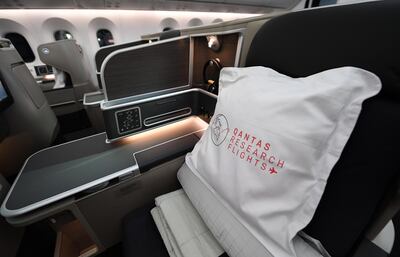
In the name of research, everyone on board the flight had a lie-flat bed in the business section of the plane. As well as being able to recline 180 degrees, passengers were also given Qantas-branded grey or blue cotton pyjamas to help make the journey more comfortable.
People were encouraged to stay awake for the first part of the flight, even napping was discouraged, as Qantas researchers aimed to assist passengers to adapt to a new time zone as quickly as possible. The cabin lights stayed up until 7pm Sydney time. Once the lights were dimmed, passengers were urged to get some rest.
However, it wasn't a case of settling in for the night. Qantas suggested that passengers continue to move around and advised those on board to “leave your seat every two hours to do light exercises, alternating between upper and lower body.”
Although all passengers were seated in business class, the airline also encouraged customers to spend some time in the economy class cabin to help balance the weight of the plane.
Emissions from all flights used in the research for the project will be fully offset by Qantas.
There were six test travellers
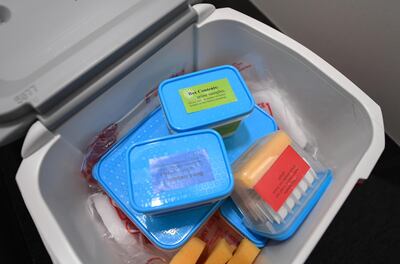
Six test passengers on board the flight were seated together on one side of the cabin and each of them was fitted with wearable technology devices to monitor their physical health to assist with research on sleep cycles and alertness.
These testers followed a detailed pre-planned schedule for eating and drinking, sleeping and movement.
Ahead of the flight, they also kept a daily log monitoring their physical and mental states. This was updated during the flight and each test traveller will continue to log in their diary for the next two weeks to track jet-lag symptoms.
Four hours into the flight, the control group took part in cabin exercises designed to combat jet-lag. These included performing press-ups against empty seats and stretching in the galley.
The group also completed tests on an iPad to monitor their levels of reaction time and attention at various stages of the journey.
The crew rotated shifts
There were 12 crew members working on the flight including four pilots. The crew rotated on a shift throughout the route so that each member of staff had allocated rest time in air. Staff were also required to rest a few days before the flight.
The four pilots on board also rotated cycles throughout the duration of the flight. As well as two flying pairs of pilots, there were also two pilots seated in the cabin who had initially flown the Qantas aircraft to New York. The combination of pilot experience on-board the historic flight was 67,000 hours.
The pilots wore electroencephalogram brain monitoring equipment for the duration of the flight to monitor their alertness when flying and their sleep during rest periods. They also submitted urine samples before, during and after the flight to help researchers track melatonin levels in their bodies.
Lead captain Sean Golding said: “The flight went really smoothly. Headwinds picked up overnight, which slowed us down to start with, but that was part of our scenario planning. Given how long we were airborne, we were able to keep optimising the flight path to make the best of the conditions.”
Cameras in the cockpit were also used to record alertness cues and operational activities.
Qantas will need new planes to fly the route
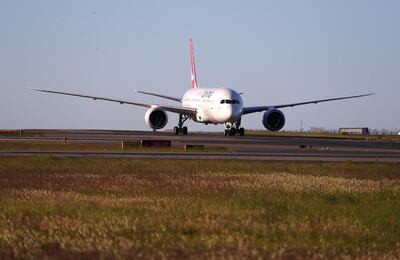
Two more research flights are planned as part of the Project Sunrise evaluations. In November, another flight will go from London to Sydney followed by a third from New York to Sydney in December. After this, Qantas will make a decision on whether to introduce the Project Sunrise services commercially.
If that happens, the airline will need to invest in some new aircraft as the 787-9 plane used in the research flights does not have the required range to fly the 16,200 kilometre journey with a full load of passengers.
To operate the test flight successfully, the aircraft took off loaded with maximum fuel, restricted passenger and baggage weight and no cargo.
Airbus has pitched the A350 as a contender to operate the services commercially while Boeing has proposed its 777X would be the best plane for the job.
If approved, the first commercial Project Sunrise flight is expected to commence flying in late 2022 or 2023. The airline would also need to reach a new deal with flight crew who would be working longer than 20 hours.
Despite its lengthy flight time, Qantas' Project Sunrise test-flight does not hold the record for the longest ever flight duration. That belongs to the now defunct TWA (Trans-World Airlines) after it flew a flight from London To San Francisco in 1957, with a flight time of 23 hours.




